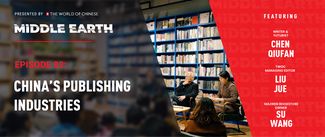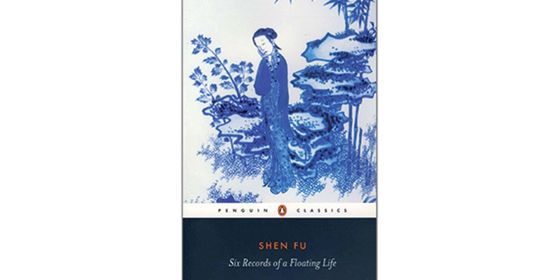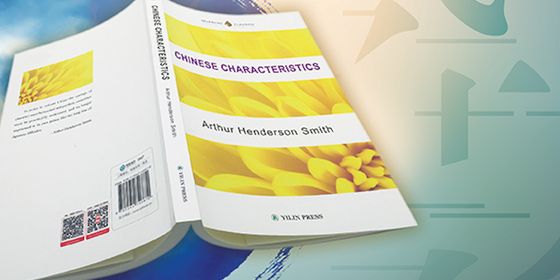Peking’s most famous cold case just got popped in the microwave
The grisly 1937 murder of 19-year-old Pamela Werner was first “solved” by Paul French’s award-winning Midnight in Peking.
Published in 2011, French’s book was a minor sensation, a lurid rickshaw ride through the fetid nether regions of Beijing society. Now a rival publication by fellow Brit and former policeman Graeme Sheppard claims to overturn that rickshaw and set the record straight.
A Death in Peking: Who Really Killed Pamela Werner? eschews the sensationalist flourishes which made its predecessor an international bestseller, and instead takes a “just facts” investigative approach to solving the decades-old mystery of how the mutilated remains of the teenage Werner ended up near the Fox Tower in Beijing, outside the Legation Quarter. Despite a joint Sino-British investigation, followed with considerable global interest, the case petered out in the face of bureaucratic resistance, and the culprits were presumed to have escaped detection amid the chaos of war—until the publication of Midnight in Peking.
Sheppard brought 30 years’ experience with the Metropolitan Police to bear on French’s book, and, he writes, “immediately saw the narrative and its conclusions were deeply flawed. Evidentially, the conclusion didn’t stand up, and with my professional curiosity aroused, I set about investigating the crime myself.”
Sheppard also has a personal connection to the murder. His wife, who apparently prompted his initial curiosity, is the granddaughter of Nicholas Fitzmaurice, who was British consul in the Chinese capital at the time of Pamela’s murder, and presided over the inquest. While Midnight in Peking never singles out Fitzmaurice for criticism, the consul does not come off in the best light for his handling of the case. A long-standing feud between Fitzmaurice and the victim’s father, former British diplomat and famed sinologist Edward Theodore Chalmers (E. T. C.) Werner, may have affected both Fitzmaurice’s judgment and Werner’s own impressions, which are detailed in London’s National Archives.
French’s book suggests their feud started over the removal of ancient texts and artifacts from the Mogao Grottoes in Dunhuang by archeologist Aurel Stein, which Werner thought was akin to looting; Fitzmaurice had taken the more conventional view of the time by supporting Stein’s expedition.
Indeed, if there exists a subtext—and not a subtle one—to Sheppard’s book, it is that Werner was a crank, a coot, and an entirely unreliable source.
“Over the years, Werner had succeeded in making a bad name for himself in many circles,” Sheppard writes in A Death in Peking. “He himself realized that he was too abrasive, too abstinent, too unwavering and too independent of mind to get on with many of his fellow foreigners and consular colleagues. He did not fit in with the in-crowd of ‘jolly good fellows’ and deplored the club-bar drinking culture enjoyed by so many.”
In Sheppard’s book, Werner is a jealous husband, a lousy father to his adopted daughter Pamela, and someone whose temper and paranoia eventually led to his being “retired” from the Foreign Service. That Werner then chose to move to a traditional Chinese dwelling, outside the Legation Quarter where most of Peking’s foreigners resided, raised eyebrows among those who already suspected Werner had, in the jargon of the time, “gone a bit bamboo.”
Sheppard’s main critique is that French relies too heavily on the records of Werner’s own investigation. In the years after Pamela’s death, Werner kept up a one-man crusade to find her killer(s). He wrote letters, harangued officials and journalists, spent his money on rewards and informants, and even went so far as to confront potential suspects.
Ultimately, French comes to the same conclusion as Werner, naming American dentist (and alleged orgy enthusiast) Wentworth Prentice as the likely perpetrator—Pamela, they suggest, was tricked into attending one of Prentice’s gatherings, and killed (possibly by accident) while resisting his advances, with her body deliberately mutilated to confuse investigators.
But Sheppard isn’t so sure, believing that “having already decided upon his suspects, Werner then went about finding evidence to support his conclusion.” Furthermore, Sheppard posits, Werner’s own repressed sexual neuroses caused him to fixate on suspects whose lifestyles he personally condemned.
French, who has read Sheppard’s book, wonders if the old Fitzmaurice family feud might not have influenced the new inquiry in turn. “[Sheppard] wants to try and trash Werner,” French tells TWOC. “But ultimately he ends up basing much of his own conclusions on Werner’s notes.” These documents, French says, are credible: “There is a coherent narrative and there are many points in that narrative that you can corroborate what [Werner] is saying.”
Speaking to TWOC, Sheppard downplays any enmity: “The notion that a British consul, or any of the many people involved in the investigation, would willfully allow the murderers of a British subject to evade justice merely because of her difficult father just doesn’t hold water.”
Another researcher who has also pursued the Werner case into the archives is Beijing-based historian Lars Thom. Unlike French and Sheppard, who rely mainly on European and American sources, Thom has looked extensively at the Chinese-language materials.
The Peking police were active in investigating Pamela’s murder, according to Thom, and their attention focused on some of the same individuals, including Fred Pinfold, whom Sheppard believed were persons of interest in the case.
Thom’s research suggests that Chinese investigators were also interested in the dentist Prentice, and noted habits—including visits by prostitutes to his Legation Quarter apartment—not in keeping with the solid Methodist of Sheppard’s portrayal.
While disagreeing with Sheppard’s conclusion, which points the finger at a childhood friend of Pamela’s, Thom admits he’s impressed by the former copper’s energetic research, as well as methodical approach to the archives.
“He is so methodical in every part of his research, except his conclusion,” says Thom. “The only thing in his book which is not well substantiated is the question of who killed Pamela.”
Despite his plodding setting forth of the facts, there are, however, other problematic aspects of Sheppard’s book. He makes much of the post-mortem removal of the heart and organs of Pamela, and tells TWOC: “This is a sensitive subject in China, with little committed to paper. When I spoke of it with foreigners in Beijing recently, they looked at me incredulously.” While evidence is, indeed, scant in the records, it is worth noting that overseas missionaries were often accused of the same violation by outraged Chinese—far from being acceptable cultural practice, pericardiectomy was a taboo associated with sorcery and evil.
Sheppard wants us to rethink the Werner murder and not immediately conclude, as he claims French has done, that E. T. C. Werner can be trusted as a reliable witness. He provides us with the back-stories of many dramatis personae only mentioned in Midnight in Peking. However, these cradle-to-grave biographies of relatively minor figures may have better served in the appendix, rather than padding the book.
Ultimately, Sheppard should be commended for shedding new light on this case. French’s book, while a breezy and engrossing read, often glosses over details or inconsistencies which might slow down his dizzying narrative. Sheppard’s systematic approach, while dry in contrast, does add much to our understanding of the case—and the circumstances of a heinous crime which may never be truly solved.
“Who Killed Pamela Werner?” is a story from our latest issue, “China Chic”. To read the entire issue, become a subscriber and receive the full magazine. Alternatively, you can purchase the digital version from the iTunes Store.













